Smart door locks have become a popular choice for home and business security.
These locks are convenient because of the ability to control access with just a few taps on your smartphone or physically using your fingerprint or even facial recognition.
One crucial aspect that can determine the reliability of your smart door lock is its battery life.
We’re excited to walk you through the different types of batteries that are best for smart door locks, the key things to consider when picking the batteries, and answer some common questions to help keep your lock working smoothly.
Let’s dive in!
Table of Contents
- Types of Batteries Used in Smart Door Locks
- Top 5 Batteries for Digital Door Locks (2025)
- Choosing the Best Batteries for Smart Door Locks: What to Consider
- Maintaining Battery Life in Smart Door Locks: Pro Tips
- Powering Your Peace of Mind
- FAQ
Types of Batteries Used in Smart Door Locks
Smart door locks primarily rely on batteries to function, so the type of battery you choose can greatly impact the lock's performance and reliability.
The most common batteries used are disposable and rechargeable AA, AAA, and lithium-ion batteries.
Here’s a breakdown of them:
- Alkaline (1.5V, AA/AAA disposable): The standard, budget-friendly choice. Best for locks on interior doors or in mild climates. They are widely available and will require the most frequent replacement in high-traffic situations.
- Lithium (1.5V, AA/AAA disposable): The premium choice for performance and longevity. More expensive, they last significantly longer than alkaline batteries and perform exceptionally well in extreme cold or heat. Ideal for high-traffic or exterior doors.
- NiMH (1.2V, AA/AAA rechargeable): Eco-friendly and cost-effective option over time. However, their lower voltage may trigger premature low-battery alerts in some locks. It is essential to check your lock's manual for compatibility before using it.
- Lithium-ion (Li-ion) (1.5V AA/AAA rechargeable or battery packs specific to the lock model): The ideal choice for high-performance locks with demanding features like Wi-Fi connectivity or video streaming, thanks to their higher energy density and longer life per charge.
Each battery type comes with its own set of pros and cons, and choosing the right one depends on your specific lock model and usage habits.
Top 5 Batteries for Digital Door Locks (2025)
In 2025, several battery brands like EBL stand out for their exceptional quality and customer satisfaction. Here are our top 5 picks to ensure your digital door lock operates smoothly and securely.
1. For All-Around Reliability: EBL Lithium AA Batteries (Disposable)
For those who want a simple, powerful, "set-it-and-forget-it" solution, our disposable lithium batteries are the premier choice.
They are engineered for long-lasting, high-stakes performance, making them ideal for any smart lock, especially on high-traffic or critical exterior doors.
- Most Important Features:
These batteries provide a massive energy capacity that lasts significantly longer than standard alkaline batteries in high-drain devices.
A key advantage is their exceptional performance in extreme temperatures, working reliably from a frigid -40°F to a blistering 140°F (-40°C to 60°C). This is critical for exterior doors where alkaline batteries can fail in the cold.
Their incredibly long lifespan means you'll be changing batteries far less often.
With an ultra-low self-discharge rate, they hold power for up to 10-15 years in storage, making them perfect for both immediate use and emergency preparedness.
Their lightweight, leak-proof design protects your lock’s sensitive electronics.
- Considerations:
This is a premium disposable battery, and its higher cost reflects its superior, long-lasting performance.
2. The Ultimate Performer: EBL Rechargeable Lithium AA Batteries with USB-C Cable
Welcome to the future of convenience.
This is our most advanced rechargeable battery, blending the power of lithium-ion with the simplicity of USB-C charging.
It eliminates the need for a separate charging dock, making it the ultimate high-performance, hassle-free option for the modern tech-savvy homeowner.
- Most Important Features:
Each battery has a built-in USB-C port, allowing you to charge them directly with the included cable from any USB power source—no bulky charger needed.
They deliver a strong, constant 1.5V voltage from start to finish, ensuring your lock’s motor always has the full power it needs to operate smoothly without bogging down.
The direct USB-C charging offers unmatched convenience.
Thanks to their lithium-ion chemistry, they boast a high energy capacity and can be recharged up to 1,200 times, offering incredible long-term value and sustainability.
- Considerations:
Because the charging technology is built into the battery itself, it's important to use the provided USB-C cable and a standard USB power adapter for best results.
3. The Eco-Friendly Choice: EBL 1.2V NiMH Rechargeable AA Batteries (2800mAh)
Join the "Recharge, don't toss" movement with our most popular eco-friendly battery.
Our high-capacity Nickel-Metal Hydride (NiMH) batteries are the perfect blend of performance, value, and sustainability, making them a smart and responsible choice for your smart lock and your wallet.
- Most Important Features:
These batteries feature an impressive 2800mAh high capacity, providing long-lasting power for your devices.
Powered by our ProCyco technology, they feature low self-discharge, meaning they hold their charge at 80% for 3 years when not in use.
They are built to last for 1200 recharge cycles, dramatically reducing waste. The long-term savings from 1200 cycles of recharges are substantial, making these the most economical choice over time.
By recharging, you can prevent hundreds of disposable batteries from ending up in landfills.
They are also incredibly versatile for other high-drain devices like gaming controllers and flashlights.
- Considerations:
These batteries have a nominal voltage of 1.2V. While compatible with most devices, we always recommend checking your smart lock’s manual, as some models are specifically optimized for 1.5V cells.
4. The High-Tech Powerhouse: EBL 1.5V Rechargeable Li-ion AA Batteries
This is the ultimate problem-solver for any smart lock.
This battery was specifically engineered to provide the full, unwavering power of a disposable with all the benefits of rechargeable technology.
If your smart lock is sensitive to voltage or you simply demand the best, this is your battery.
- Most Important Features:
At its core is an advanced internal buck converter chip that delivers a rock-solid, constant 1.5V output throughout its entire cycle.
This eliminates the false low-battery warnings that can occur with 1.2V rechargeables. With a high capacity of up to 3300mWh and a life of 500-1000 recharge cycles, its performance is unmatched.
It is our most recommended battery for smart locks, as it guarantees stable and reliable power delivery every time.
You get the peak performance your lock was designed for, plus the massive cost savings and environmental benefits of a rechargeable.
It also performs exceptionally well in cold weather.
- Considerations:
To ensure safety and longevity, these high-tech batteries must be charged with a compatible EBL Li-ion smart charger.
5. The Complete Power Package: EBL Smart Charger & Battery Combo
The easiest way to upgrade your smart lock's power is with a complete, all-in-one package.
This kit pairs our top-tier 1.5V Rechargeable Li-ion batteries with an intelligent smart charger, giving you everything you need to keep your lock and other household devices powered and ready to go.
- Most Important Features:
The included smart charger has built-in safety protections, including systems to prevent over-charging, short-circuits, and overheating, protecting your batteries and your home.
This combo pack is the most convenient and cost-effective way to switch to a high-performance rechargeable ecosystem.
Using a dedicated EBL smart charger ensures your batteries are charged optimally every time, helping you achieve the maximum possible cycle life.
- Considerations:
A smart charger is the key to unlocking the full potential of your rechargeable batteries. For best performance, simply pair it with a standard USB power adapter.
Choosing the Best Batteries for Smart Door Locks: What to Consider?
Choosing the right battery for your smart digital door lock is about more than just matching the size; it involves considering several factors that influence your lock’s performance, reliability, and your overall satisfaction.
Lifespan
Battery life is arguably the most important factor, as a battery that lasts longer reduces the frequency of replacements and the risk of your lock failing at an inconvenient time.
Voltage and Device Compatibility
Compatibility with your specific lock model is crucial, especially when it comes to voltage.
Many smart locks are designed for the 1.5V output of disposable batteries.
Using a 1.2V rechargeable NiMH battery, while excellent for many devices, can sometimes cause a smart lock to report a "low battery" warning prematurely, even if the battery is fully charged.
For devices sensitive to voltage, consider batteries with a constant 1.5V output, such as disposable lithium or advanced 1.5V rechargeable Li-ion batteries that use a built-in circuit to deliver steady power.
Power Needs of the Lock's Motor
Unlike a simple TV remote, a smart lock has a motorized deadbolt that requires a significant burst of power to operate.
A battery must be able to handle this high-current demand. Some battery types may struggle to provide this power, leading to sluggish or failed operation.
High-performance batteries, like 1.5V rechargeable Li-ion series, are designed to support a continuous high-current discharge (over 3A), ensuring the motor gets the power it needs every time.
Operating Environment and Temperature
Consider where your lock is installed. An indoor lock has very different needs from a lock on an exterior door facing the elements.
Standard alkaline batteries can lose significant power in the cold and may fail entirely around -10°C (14°F).
For outdoor locks in colder climates, it is essential to choose a battery designed for extreme temperatures.
Lithium-based batteries are the clear winner here; EBL’s 1.5V rechargeable Li-ion batteries operate effectively down to -20°C (-4°F), while disposable lithium-iron batteries can function in conditions as cold as -40°C (-40°F).
Cost
The cost is also a key consideration—while premium batteries may offer better performance, they often come at a higher price, so it's essential to balance cost with longevity.
Compatibility
Compatibility with your specific lock model is crucial as well, as not all batteries are suited for every type of digital door lock.
Ensuring that the battery you choose fits and functions optimally with your lock can save you from potential issues down the road.
Environmental impact
This is another aspect to consider, especially if you’re looking to minimize waste; in this case, rechargeable batteries might be the better choice.
Taking all these factors into account will help you make an informed decision that meets both your security needs and your budget.
To make things simpler for you, below is how you can decide the type of battery most suited for you:

By taking all these factors from cost and lifespan to voltage, temperature, and safety, you can make an informed decision that meets both your security needs and your budget.
Maintaining Battery Life in Smart Door Locks: Pro Tips
Proper battery care goes a long way in ensuring your smart lock is always ready when you need it. Follow these professional tips to get the best performance and lifespan out of your batteries.
1. Activate Your Rechargeable Batteries
For new rechargeable batteries, especially NiMH types, it’s a great practice to perform a few initial charge-discharge cycles.
To get the maximum capacity and lifespan from your batteries, fully charge them before the first use, let them run down in a device, and then fully recharge them.
Repeating this process 2-3 times can help the battery reach its peak performance potential.
2. Avoid Draining Batteries to Zero
Many high-quality smart chargers have a safety feature that prevents them from charging a battery with extremely low voltage, e.g., below 0.6V, as this can indicate a damaged cell.
To avoid this, it's best to swap out and recharge your batteries as soon as your smart lock gives you a low-battery notification.
3. Use Battery Manufacturer Recommended
This is also important, as using incompatible batteries can affect performance and even damage the lock.
4. Avoid Mixing Batteries
Don't mix old and new batteries or different brands, as this can cause uneven power distribution and reduce battery life.
5. Keep the Lock Clean & Dry
Keeping your lock and the battery compartment clean and free from dust and moisture will also help maintain optimal battery performance.
6. Use a High-Quality Smart Charger
The charger you use is just as important as the batteries themselves for maintaining long-term health.
A quality smart charger does more than just push power; it provides multiple layers of protection.
Look for chargers that offer overcharge protection, temperature monitoring, and correct current matching for your specific battery type.
These features prevent damage and ensure you get the maximum number of cycles out of every rechargeable battery.
7. Proper Storage for Spare Batteries
Keep them in a cool, dry place away from direct sunlight.
High temperatures can increase a battery's self-discharge rate, meaning it loses power faster even when not in use.
It’s also important to store them in a proper battery case or in their original packaging to prevent the positive and negative terminals from accidentally touching metal objects, which can cause a short circuit.
8. Check Your Lock’s Firmware
Occasionally check your smart lock's app for any available firmware updates from the manufacturer.
These updates often include performance improvements, one of which can be better power management, helping your lock use its battery power more efficiently.
Powering Your Peace of Mind
Choosing the right power source is the final step to ensuring your smart lock operates flawlessly. The "best" battery depends on your specific needs, your lock's requirements, and your lifestyle.
AA batteries are the go-to choice for most models. The exact number you’ll need can vary depending on the brand and how many features your lock has.
Most smart lock manufacturers recommend sticking with alkaline batteries, but for those who value maximum convenience and fail-proof reliability in extreme weather, a high-performance disposable lithium battery is the top-tier choice.
For the eco-conscious user seeking incredible value, high-capacity rechargeable batteries offer hundreds of recharges, saving money and reducing waste.
FAQ
How long do AA batteries last in a door lock?
The lifespan of AA batteries in a smart lock can range from 3 to 12 months, depending on lock usage, features like Wi-Fi, and the battery type you select. High-capacity batteries like disposable lithium or rechargeable Li-ion will typically last the longest.
Why is my door lock battery draining so fast?
High usage and features like Wi-Fi are common causes, but environmental factors also play a huge role, as extreme cold can severely reduce battery performance. Additionally, using 1.2V rechargeable batteries in a lock designed for 1.5V cells can cause inefficiency and lead to faster-than-expected power drain.
How often should you change batteries in a door lock?
You should replace the batteries as soon as your lock gives a low-battery notification, either through its app or an indicator on the device itself. This ensures you won't get locked out and prevents the lock from malfunctioning due to a completely dead battery.
What to do when the battery dies on the door lock?
Most smart locks provide a backup mechanical key for physical entry. Many models also include an external 9V battery terminal or a USB inlet, allowing you to temporarily power the lock by holding a 9V battery or the USB against the contacts to enter your code.
What kind of batteries do keypad door locks use?
The vast majority of keypad door locks use AA-sized batteries. Depending on your needs, you can choose from several types, including standard disposable alkaline, high-performance disposable lithium, or sustainable rechargeable options like 1.2V NiMH and advanced 1.5V Li-ion batteries.

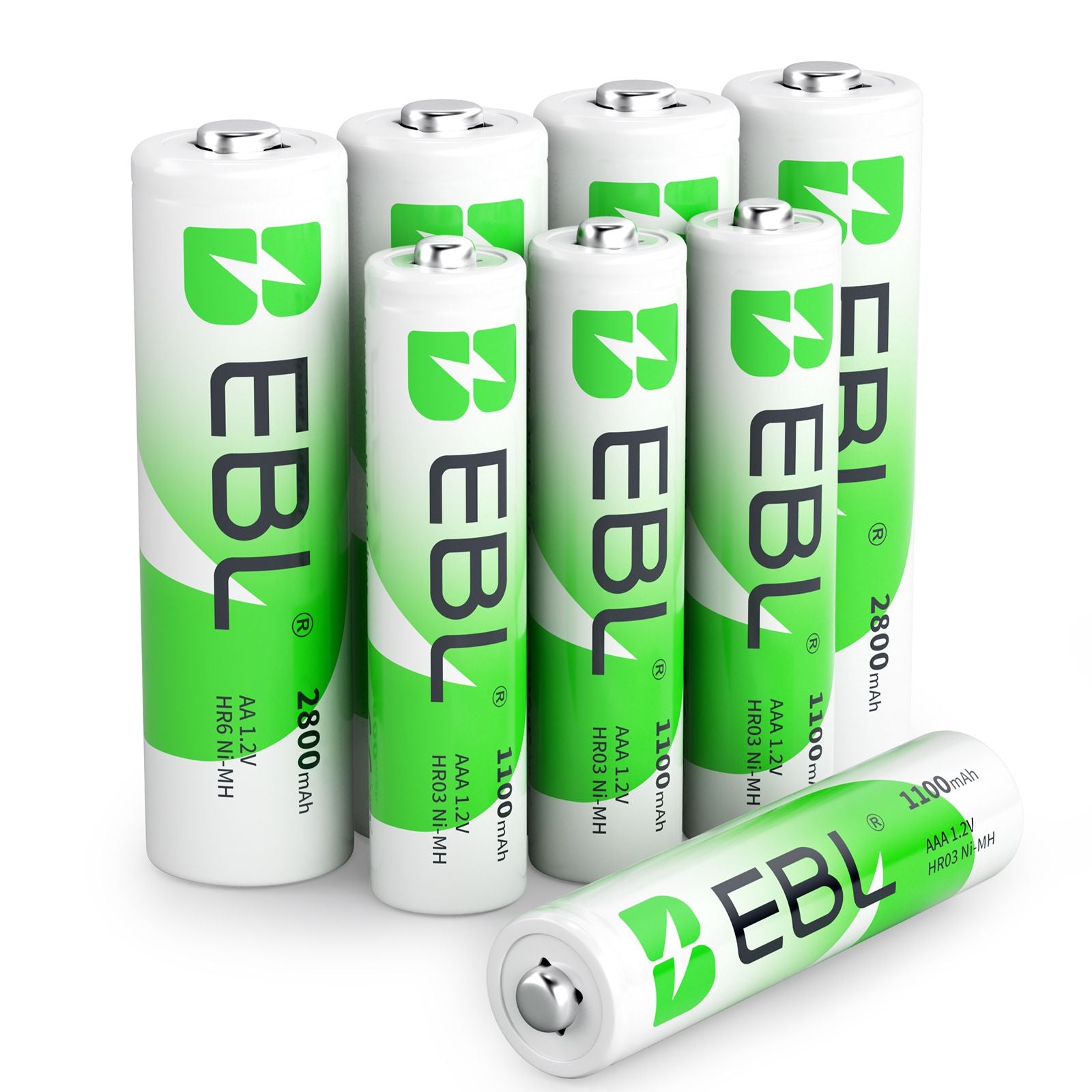

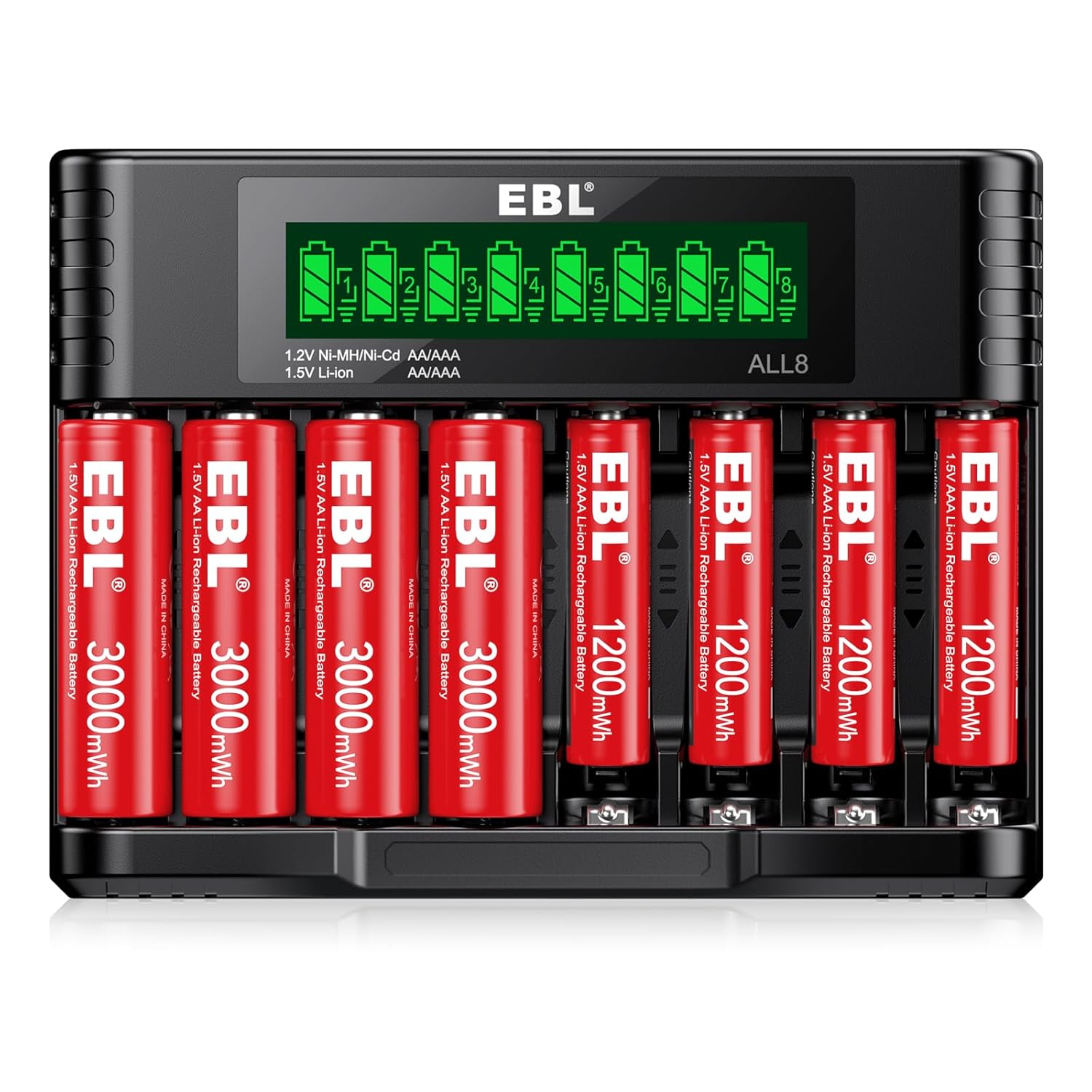

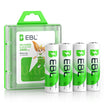
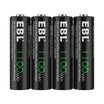
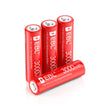
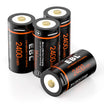
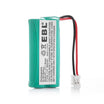
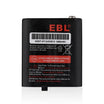
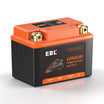
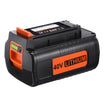
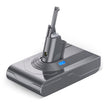
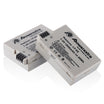
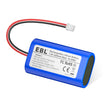
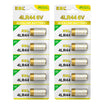
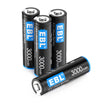
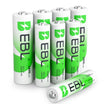
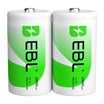
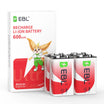

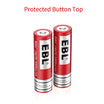
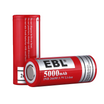
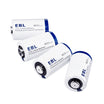
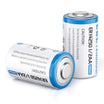
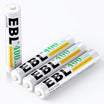
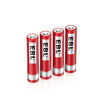
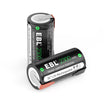
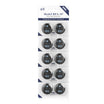
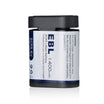
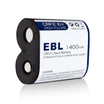
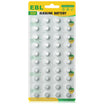
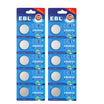








Leave a comment
All comments are moderated before being published.
This site is protected by hCaptcha and the hCaptcha Privacy Policy and Terms of Service apply.